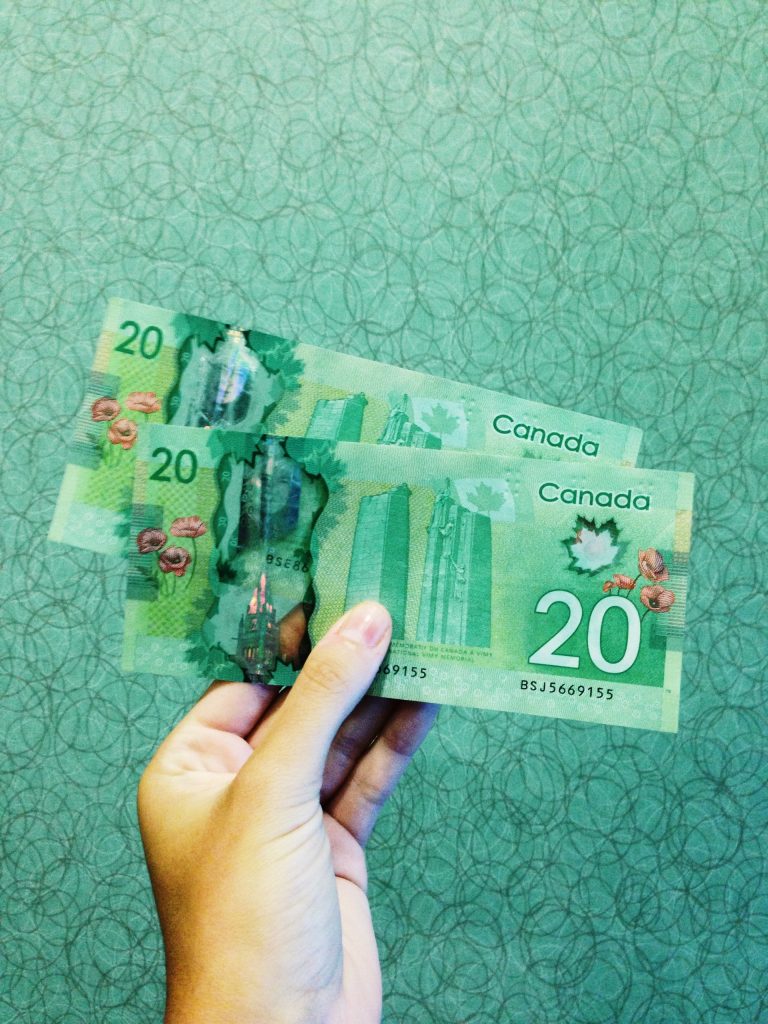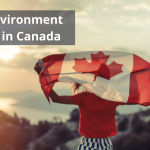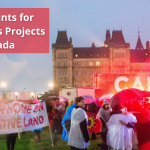
CARBON TAX: WHAT IS IT AND WHY DO WE NEED IT?
Humans are harming the planet in a BIG way. A lot of our human activity is creating harmful carbon dioxide emissions, and these emissions are ruining our planet. When we use fossil fuels, like petroleum, coal, and natural gas, they emit carbon dioxide into the environment and this carbon dioxide ‘traps’ heat in our atmosphere. This causes our environment to heat up, (global warming) and this increased heat is detrimental to our planet.
We need to make changes. We need to reduce our carbon footprint. We need reduce the amount of carbon emissions we are releasing into the air. This is, essentially, what carbon taxes are all about.
In simplified terms, carbon tax is ‘a tax imposed on the amount of carbon emitted into the atmosphere as a result of human activity.’ The carbon tax is levied on things that cause harmful gases to deter people from using the things that create these gases. To reduce carbon dioxide emissions, we must reduce the activities that create carbon dioxide. So, by forcing people to pay money (by taxing them), the hope is that people will reduce their excessive use of things that emit carbon dioxide. The less carbon dioxide people emit, the less money they have to pay.
In a nutshell, carbon taxes are a way of promoting a cleaner future by hitting people where it hurts – in their wallets.
And carbon taxing works. Canada is NOT the first country to introduce carbon taxes. Other countries have introduced carbon taxes (before Canada) and they have seen a reduction in their carbon output.
There is a catch, though. Taxing things that emit carbon dioxide, like increasing the costs of heating a home or raising the prices of gas, can have a big financial impact on families. The government acknowledges this problem. The tax is charged for both individuals and businesses. But the government does not want individuals to feel the brunt of this tax. So the government has found a way to ‘reimburse’ individuals for the carbon taxes they are paying. This is where Carbon Tax Rebates come in.
The government, both at the Provincial and Federal level, have found a way to ‘soften the blow’ from carbon taxes. Eligible individuals and families can receive rebates to offset the higher prices at the pump, or the increased costs of heating, or any other place where carbon taxes are being collected.
These rebates are known as Carbon Tax Rebates.

WHAT ARE CARBON TAX REBATES?
Carbon tax rebates are money given back to individuals and families to offset the cost of carbon taxing. But when it comes to Carbon Tax Rebates, not all provinces are the same. Some provinces offer rebates at the provincial level, while others fall under federal rebates. This is because carbon taxes were mandated ON A FEDERAL LEVEL to mitigate the use of things that create carbon emissions. But, some provinces already had their own carbon taxes in place. Quebec, for example, implemented carbon taxes in 2007. Not all provinces imposed carbon taxes, though, so the Federal Government had to force the provinces that had not adopted their own provincial carbon taxes to adopt a federal carbon tax program.
The Federal Carbon Tax Rebate is called the Canada Action Incentive Payment. It is a Carbon Tax Rebate and it covers four provinces: Manitoba, Alberta, Saskatchewan, and Ontario.
As mentioned, other provinces already had carbon tax programs in place, and as such, they have their own individual carbon tax rebates, or lack thereof, which we will discuss later on.
But since the CAIP is the biggest program that affects the most people, let’s start with that one.
WHAT IS THE CAIP – The Canada Action Incentive Payments?
Residents of Manitoba, Alberta, Saskatchewan, and Ontario can receive the CAIP.
The Climate Action Incentive Payment (CAIP) ensures that the price on carbon pollution will remain affordable for people who reside in areas where the taxes are being collected. The government is giving most of the proceeds from carbon taxing in these provinces directly back to the people who paid them by way of quarterly payments (tax rebates).
Under the CAI, eligible recipients can receive a tax rebate that will be paid out quarterly beginning in 2022. The rebate is to offset the costs of carbon taxes for both families and individuals living in eligible provinces.
THE AMOUNT of the tax rebate (how much money each family or person receives) is tied to INCOME, not actual energy use. The amount of the rebate is calculated when you submit your Income Tax Return. Starting in 2022, the rebate will be paid out quarterly in April, July, October and January, although the first payment for 2022 won’t start until July, and will include both April and July’s payment. Before 2022, the payments were in the form of a refundable credit that was claimed on personal tax returns annually.
HOW MUCH each person or family receives depends on the size of the family and where that individual or family lives. Bigger families pay more carbon tax, so they will receive more of a rebate than individuals because their eligible child or children will also each receive a rebate. People who live in small or rural communities spend more money on energy costs because they don’t have access to ‘big city things’, like public transportation, so they will receive an additional 10% under the program.

It is estimated that MOST families will see a financial gain because of the payment; they will receive more money from the Climate Action Incentive Payment then they actually spent in carbon taxes. Around 8 out of 10 families should receive more than they spent.
This is exciting news for eligible Canadians, and the best part is that eligible Canadians don’t even need to formally apply to receive the CAIP. Eligible Canadians only need to file a personal income tax return for 2021 to receive the rebate for the upcoming year.
Read More: Solar Energy: It’s Easier Than You Think (and Saves 80%!)
CAIP ELIGIBILITY REQUIREMENTS:
Not every Canadian citizen is eligible for the rebate. Currently, only residents of Alberta, Saskatchewan, Manitoba or Ontario are eligible. Residents of these provinces must reside in the province on the first day of the month of the payment, AND on the last day of the month before the payment month to be eligible.
Residents must also fulfil ONE of the requirements below to be eligible:
- Be 19 years of age or older
- Be married or have a common-law partner (in the year you are applying for
- Have a child or children that live with you
Remember, the government is trying to offset the costs of carbon taxing for both individuals and families, so people with children will receive more money because they spent more money on carbon taxes. But in order for parents to receive the rebate for their children, the child (or children) must be eligible.
ELIGIBLE CHILDREN FOR THE CAIP
If you have an eligible child, or children, they can ALL receive a credit. An eligible child is a child that is under 19 years of age, that lives with you, and that you are primarily responsible for. Your child must be registered for the Canada Child Benefit. You can receive a credit for EACH child that is eligible, and that credit will be included when your CAIP is calculated. So if you have an eligible child (or children) and they are NOT registered for the Canada child benefit, they will NOT receive the CIAP. You must register them for the Canada child benefit BEFORE they can receive the credit.
Shared Custody: If you share custody of your child or children with your ex-spouse, then you and your spouse will split the amount of the benefit 50/50 (as long as your child is eligible). So, if your child or children does not live solely with you full-time, you will get 50% of the amount calculated per eligible child, and your ex-spouse will get the other half.
CAN BOTH PARENTS RECEIVE THE REBATE?
No, they cannot. Both parents can CLAIM the benefit, but only one person per household can RECEIVE the actual payment. That means that if you are married or have a common-law partner, only ONE of you can receive the rebate. There is only ONE rebate per family. The rebate will automatically go to the person who had their tax return assessed first. It really doesn’t matter, though, WHO gets the rebate because the rebate is a SET amount; it is the same amount of money per family regardless of which spouse or common-law partner receives it.
Ontario Renovation Grants: 82 Government Grants, Energy Rebates & Tax Credits for Ontario Homeowners
HOW DO YOU APPLY FOR THE CAIP?
You don’t need to apply! The Canada Revenue Agency, (the CRA) will determine your eligibility for you when you file your income tax return, and they will calculate your rebate. Once you have filed your income tax return, they will send you your payments.
And as long as you continue filing your tax return every year, you (or your spouse or common-law partner) will continue receiving the rebate, as long as you remain eligible.
ARE RESIDENTS OF RURAL COMMUNITIES ELGIBLE?
Yes! If you are a resident of a rural or small community in one of the eligible provinces, you can actually receive an additional 10% in the form of a CAIP supplement. Why? Because the government acknowledges that people living in rural and small communities actually use MORE energy, and simply don’t have the option to take public transit to reduce their energy use. However, unlike the ordinary CAIP (which you do NOT have to apply for), you do have to apply for the supplement. To receive the CAIP Supplement, you have to complete SHCEDULE 14, and attach this schedule to your tax return. There are eligibility requirements for the supplement. You can find those requirements here:
HOW MUCH MONEY WILL YOU GET?
This is probably the first question that comes to mind, and rightfully so! If you are eligible to receive the rebate, you are probably wondering how much money you’ll get. We’ve provided you with an (estimated) amount based on information from the government website.
***Remember, the rebate is PER FAMILY, so the amount each family receives depends on the size your family.
- Ontario: A family of four living in Ontario will receive roughly $451 for 2021. The estimated rebate for 2022 is not known because Ontario plans to adopt their own provincial carbon tax structure.
- Manitoba: A family of four living in Ontario will receive roughly $654 for 2021. This is expected to go up to $801 in 2022.
- Saskatchewan: A family of four living in Saskatchewan will receive roughly $1189 n 2021. That is expected to go up to $1459 in 2022.
- Alberta: A family of four living in Alberta will receive roughly $992 in 2021. That will go up to $1200 in 2022.
WHEN WILL YOU GET YOUR CAIP PAYMENT?
Your CAIP will be paid out to you four times per year on: April 15th, July 15th, October 15th, and January 15th. You MUST file you 2021 Income Tax and Benefit Return to receive the CAIP. Once you do, you can expect to receive your first payment on July 15th, 2022, which will include the payment from April 15th because it is retroactive. If you are signed up for direct deposit with the CRA, then you will receive your CAIP by direct deposit.
REASONS YOU MIGHT NOT GET THE REBATE
Here is a list of reasons that will prevent you from receiving the CAIP:
- You are not eligible because you don’t live in an eligible province. Remember, only residents of Alberta, Manitoba, Saskatchewan, and Ontario can receive the CAIP. Plus, to be considered an eligible resident, you must be living in that month on the FIRST day of the payment month AND on the last day of the month before the payment month.
- You are not eligible because you are not old enough, you are not married (common-law included), or you do not have a child living with you. To receive the CAIP, you must be over the age of 19, OR you must be married or previously married, OR you must have an eligible child living with you. You MUST fulfil one of these requirements to receive the CAIP.
- Your child is not registered for the Canada Child Tax Benefit. For you child to receive the CAIP, your child (or children) MUST be registered for the Canada Child Tax Benefit.
- You were incarcerated the previous year. Anyone who was incarcerated the previous year DOES NOT qualify for the CAIP.
- You owe taxes. If you owe taxes, you will still receive the rebate, but the rebate will automatically go directly towards any outstanding debts you have with the CRA. So although you will still receive the rebate, it won’t be cash in hand until all your outstanding CRA debt is resolved.
- You lived outside Canada for any portion of the tax year.
WHAT IF I DON’T LIVE IN AN ELIGIBLE CAIP PROVINCE?
Residents that do not live in Alberta, Manitoba, Saska, or Ontario CANNOT receive the CAIP. Some provinces have their own form of Carbon Tax Rebate. Some do not. As an overview, we have outlined each province below, and the respective Carbon Tax Rebates.
British Columbia:
Residents of British Columbia may be eligible for the BC Climate Action Tax Credit (BCCATC). This carbon tax rebate provides eligible residents with around $154 per adult, and $45 per child. In 2022, the rebate is expected to go up to $193.50 per adult and $56.50 per child.
The BCCATC though is INCOME-BASED, and residents of British Columbia can only receive this rebate if they have a family net income below $62, 115.
New Brunswick
New Brunswick residents can receive a carbon tax benefit (of sorts) in the form of a personal income tax cut. The government of New Brunswick has committed to reinvesting the money earned from carbon taxes back into its province.
Northwest Territories
The Territories implanted a carbon tax in 2019. Residents of the Northwest Territories can receive a 100% rebate on home heating fuel, with an additional ‘cost of living offset’. The offset is up to $260 per adult and up to $300 per child.
Yukon
Yukon offers residents around $176 per family of four in carbon tax rebates.
WHY DO DIFFERENT PROVINCES HAVE DIFFERENT CARBON TAX REBATES?
It is important to note that ALL provinces and territories are REQUIRED by the Federal Government to charge carbon taxes. However, some provinces were ahead of the game and were ALREADY charging carbon taxes provincially. Those that weren’t had the choice of whether or not they would participate in the federal carbon tax program, or develop their own carbon tax program, which is why there are so many discrepancies between provinces when it comes to Carbon Tax Rebates. Provinces that are handling their own carbon tax programs (as long as they meet the federal carbon tax requirements) are able to offer their own provincial-specific rebates.
Provinces that DO NOT have a Carbon Tax Rebate:
PEI, Quebec, Newfoundland and Labrador, Nunavut and Nova Scotia do not offer Carbon Tax Rebates. The reasons for this vary widely between provinces, but most of the provinces are reinvesting any federally imposed carbon taxes directly back into their province to help reduce carbon emissions.
HOW CAN YOU GET THE MOST OUT OF YOUR CARBON TAX REBATE?
Here are some ways to help you maximize your Carbon Tax Rebate. Remember, the Carbon Tax Rebate, whether it is through the Federal CAIP or through a different provincial program is based on INCOME, not how much money you actually spend. So, if you spend less money on the things that are ‘carbon taxed’ (like gasoline and heat) then you will pay LESS in carbon taxes, BUT you will still receive the SAME amount for your carbon tax rebate. This can give you some extra money in your wallet.
- Try to cut your home heating costs. This will cut down your monthly bill, as well as lower the amount of carbon tax you pay. Things like turning down the heat when you aren’t home, putting on an extra sweater when are, using a blanket while watching TV means you will spend less money on heat, which means less money on carbon tax then you receive in rebate.
- Make sure your home is energy efficient. There are government available to help you with this. The Canada Greener Homes Grant offers you a cash reimbursement of up to $5000 to help offset the costs of retrofitting your home to make it more energy efficient. Retrofits like insulation and upgraded sealing means you will pay less in carbon tax.
- Try to cut down on your gas. You will pay a carbon tax every time you fuel up, so if you can, try using public transit or riding your bike. The less you pay in fuel, the less you pay in carbon tax, so that carbon tax rebate gives you more money than you spent in tax.
- If you can, you might want to consider switching to an electric car. Doing so will allow you to take full advantage of the carbon tax credit (no gas!) as well as other government incentives for electric cars, such as the government’s electric car rebate.
Carbon taxes are likely here to stay. We need them so we can try to reverse some of the damage we’ve already done to our planet, as well as prevent future damage. But the taxes you pay upfront will come back to you in the form of a carbon tax rebate (in some provinces). Find out what Carbon Tax Rebates you can collect, and take advantage of that rebate by finding ways to reduce your carbon footprint.
Doing so will not only help you keep more money in your pocket, but it will also help heal the environment.






Leave a Reply